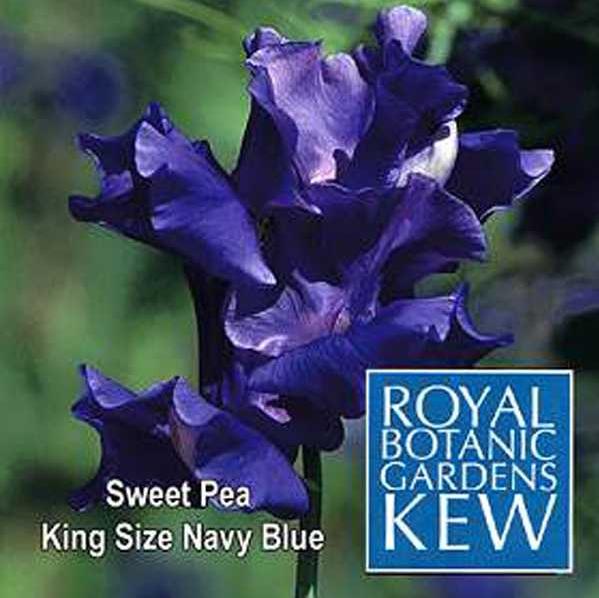| |
Kew Gardens, London | 
Custom Search
|
 |
Kew Gardens are the Royal Botanic Gardens having an area of 121 hectares. These are comprised of gardens and glasshouses between Kew, which is located in south-west of London and Richmond. The name of the organisation which runs this garden and Wakehurst gardens in Sussex is also called Kew. It is an internationally important scientific botanical research and educational institution with a staff comprising 700 people and an income of £56 million for the year ended 31st March 2008. It gets around 2 million visits per year. The Director of the Royal Botanic Gardens, Kew, is responsible for the world's largest collection of living plants. It employs more than 650 scientists and other staff. The herbarium, which is the one of the largest in the world, has over 7 million preserved plant specimens whereas the living collections include more than 30,000 different kinds of plants. The library contains more than 750,000 volumes, and the illustrations collection contains more than 175,000 prints and drawings of plants. The Kew site includes four Grade I listed buildings and 36 Grade II listed structures in an internationally significant landscape.
Main Attractions at Kew Gardens
Garden attractions at Kew
Find out more about the many features of Kew and everything you can see during your visit. To help you plan your day we have picked out the top four most popular attractions, but there is lots more to see amongst Kew's 300 acres, and a wealth of history to explore.
Top attractions | |||
|
| Experience a tropical rainforest environment inside this, Kew's most iconic building. |  | Climb 18 metres into the tree canopy for a spectacular bird's-eye view of Kew. |
|
| Our biggest public glasshouse, and home to the world's tallest indoor plant. |  | Princess of Wales Conservatory Containing ten climatic zones and a huge variety of plants, including orchids and cacti. |
Kew Gardens attractions
Glasshouses | Kids' Kew | Kew's iconic plants | Museums, galleries & historic buildings | Formal gardens |
Gates, restaurants & visitor facilities | Themed plant collections | Vistas & landscape features | Water & wildlife |
Decorative structures | Behind the scenes at Kew
A-Z listing
Explore our A-Z guide for more information on everything there is to see at Kew Gardens.
A B C
Aquatic Garden | Arboretum Nursery | Azalea Garden | Badger Sett | Bamboo Garden & Japanese Minka House | Bee Garden | Berberis Dell | Bonsai House | Brentford Gate | Broad Walk | Cambridge Cottage | Caucasian elm | Cedar Vista | Cherry Walk | Chestnut-leaved oak | Chilean wine palm | Climbers & Creepers | Compost Heap | Conservation Area | Corsican pine | Crocus Carpet
D E F
Davies Alpine House | Duke's Garden | Eastern Cape giant cycad | Evolution House | False acacia
G H I
Giant waterlilies | Glory of the snow | Grass Garden | Holly Walk | Herbarium | Ice House | Indian horse chestnut
J K L M N
Jade vine | Japanese Gateway | Japanese Landscape | Japanese Minka House & Bamboo Garden | Jodrell Laboratory | Joseph Banks Building | Kew Palace | King William's Temple | Library, Art and Archives | Lion Gate | Lucombe Oak | Maidenhair tree | Main Gate | Marianne North Gallery | Marine Display | Monkey puzzle tree | Museum No. 1 | North American Tulip Tree |
O P Q R
Orangery | Order Beds & Rose Pergola | Oriental plane | Pagoda | Pagoda panorama | Pagoda tree | Pagoda Vista | Palm House | Palm House Parterre | Princess Walk | Princess of Wales Conservatory | Queen's Garden | Queen Charlotte's Cottage | Redwood Grove | Rhizotron & Xstrata Treetop Walkway | Rhododendron Dell | Riverside Walk | Rock Garden | Rose Garden | Rose Pergola | Ruined Arch |
S T U
Sackler Crossing | Secluded Garden | The Shirley Sherwood Gallery of Botanical Art | Sir Joseph Banks Building | Stable Yard | Stag Beetle Loggery | Stone pine | Sweet chestnut | Syon Vista | Temperate House | Temple of Aeolus | Temple of Arethusa | Temple of Bellona | Temple of Imagination | Titan arum | Treehouse Towers | Tropical Nursery | Turner's oak
V W X Y Z
| Victoria Gate | Waterlily House | Waterlily Pond & Woodland Glade | Wollemi Pine |
Ticket prices for Kew Gardens, London
It is BEST to purchase tickets at Kew Gardens on the day of your visit as online tickets might take upto 7 days to reach your door step.
Royal Botanic Kew Gardens |
Tickets can be purchased online for Kew Gardens, but they are not yet available online for Wakehurst Place.
Entry Month Details
MARCH Entry Valid Between 1st and 31st of March 2011
APRIL Entry Valid Between 1st and 30th of April 2011
MAY Entry Valid Between 1st and 31st of May 2011
Adults £13.90, Concessions £11.90, Children FREE
Separate charges apply for Kew Palace.
Group Visits (10 or more people)
Book Kew Gardens tickets
Kew Gardens opening hours
Glasshouses 9.30am until 5.00pm
and Galleries
Walkway 9.30am until 5.00pm (Last entry 4.45pm)
Climbers and Creepers 10.30am until 5.00pm
Kew Palace Closed The Palace is open between 2 April - 25 September 2011
Kew Restaurants and Cafes
Open Early spring closing times:
Sunday 6 Feb 2011 to Sat 26 March 2011
Orangery Restaurant 10am until 4.30pm
White Peaks Cafe 10am until 4.30pm
Pavilion Restaurant 10.30am until 4.30pm
Victoria Gate Cafe 9.30am until 5.00pm
Kew Shops
Open Early spring closing times:
Sunday 6 Feb 2011 to Sat 26 March 2011
White Peaks Shop 10am until 5.00pm
Victoria Plaza Shop 9.30am until 5.30pm
| Royal Botanic Gardens Kew, Richmond, Surrey, TW9 3AB | |
Contact Kew Gardens
Tel: +44 (0)20 8332 5655
Email: [email protected]
Travel to Kew Gardens
Royal Botanic Gardens is located at Kew, Richmond, Surrey, TW9 3AB. We encourage you to visit Kew Gardens via public transport.
By London Underground
Kew Gardens station (District Line, London Overground) is the closest London Underground station, and is in zone 3.
From Kew Gardens station it is a 5 minute walk to Kew Gardens (Victoria Gate entrance). Exit the station through the row of shops and walk down Lichfield road (opposite) to reach Victoria Gate.
Please always check the Transport for London website for service disruptions before making your journey.
To find out the best route to Kew by public transport, use the Transport for London Journey Planner
By train
Train services (South West Trains) from Waterloo, via Vauxhall and Clapham Junction, stop at Kew Bridge station. From Kew Bridge station it is a 10-minute walk to Kew Gardens (Main Gate entrance). For more information call +44 (0)8457 484950 or visit the National Rail Journey Planner.
By bus
Routes 65 and 391 stop close to the entrance gates. Routes 237 and 267 stop at Kew Bridge station.
By car or coach
Kew Gardens is well signposted from all the major local roads. The South Circular (A205) passes the north-east corner of Kew Gardens and Kew Road (A307) forms the eastern border.
Please note that Kew has no coach park, however coach parking is free on Kew Road (A307) after 10am. Groups are advised to arrive at either Victoria Gate or Main Gate, but note that only Main Gate has a designated coach drop off point. See our groups pages for more information.
From the west :
- take M4 (exit Junction 2) or A4
- upon reaching the Chiswick roundabout, follow signs to Kew Gardens to join the A205 and cross the River Thames at Kew Bridge
- turn right immediately after the bridge on Kew Green, and then right down Ferry Lane to reach the Kew Gardens car park
From north London:
- follow the North Circular until you reach the Chiswick roundabout, then follow directions from here as above
From the south or west:
- from the M3 continue on the A316
- upon reaching the Richmond roundabout, fork left on to Kew Road (A307)
- you will then see the Pagoda to your left and then the wall on your left which is the boundary to the Gardens
- there is limited parking along the Kew Road here after 10am, closest to Victoria Gate and Lion Gate
- alternatively, to reach the car park, continue along this road and upon reaching Kew Green turn left and follow the signs
From the South Circular Road:
- follow the South Circular Road past Kew Retail Park and under a railway bridge
- at the next traffic light junction, where the A307 joins from the left, go slowly through the junction and immediately turn left into Kew Green (NOT sharp left into the A307, as this is no left turn)
Which gate?
There are four entrances to Kew Gardens:
- Victoria Gate
- Main Gate
- Brentford Gate
- Lion Gate
To find more, see our which gate to use guide
Car Parking
The directions above are to the Kew Gardens car park, near the Brentford Gate, which is reached via Ferry Lane, a narrow turning off Kew Green (TW9 3AF). The car park takes 300 cars so parking is limited. Parking has a flat fee of £6. There is no charge for motorcycles and mopeds. The car park closes half an hour after the Gardens close.
There are disabled parking spaces in the car park and further spaces are available adjacent to Main Gate on Kew Green.
Free parking is also available on Kew Road (A307) after 10am every day. From here the nearest entrance is Victoria Gate. This road is congested at peak times, so it may be easier to come via public transport. Please note that parking restrictions apply on most of the residential streets around Kew and on parts of Kew Road, please check parking restrictions carefully.
Coach Parking
Coaches are advised to arrive at Victoria Gate and park on Kew Road (A307). Coaches are not allowed to park around Kew Green.
By Bicycle
Bicycle racks are available at Victoria Gate and Brentford Gate entrances. The racks at Brentford Gate are located in the adjacent car park, and is a covered shelter. There are also bike racks situated outside Main Gate.
Visitor Information Map
Our current Visitor Information map is available from ticket offices on arrival, or you can download a pdf here.
Gates and restaurants and other facilities
Find out where you can eat, drink and shop during your visit to Kew Gardens.
Brentford Gate
The present entry point for Brentford Gate opened in 1847. It has a pair of simple cast iron gates supported on Portland stone pillars.
Lion Gate
Located at the southeastern tip of the Gardens, Lion Gate opened in around 1845. It comprises the original single wrought-iron gate supported by pillars of yellow London brick.
Main Gate
Kew’s Main Gate stands beside Kew Green on the northern edge of the gardens. It is now a Grade II Listed building.
Orangery
The Grade I listed Orangery is Kew’s only surviving plant house designed by Sir William Chambers.
Victoria Gate
Kew’s Victoria entrance comprises a pair of imposing double gates with flanking single side gates designed by William Eden Nesfield.


